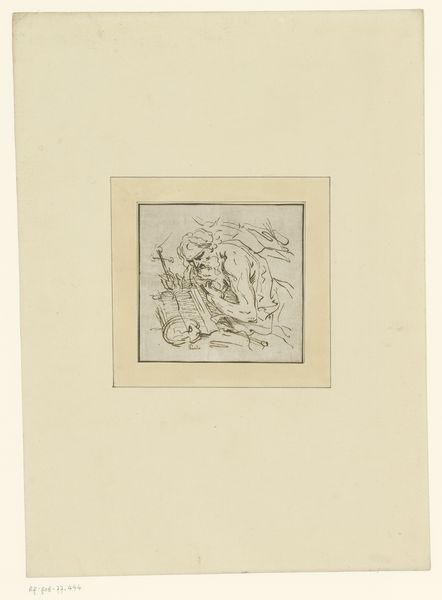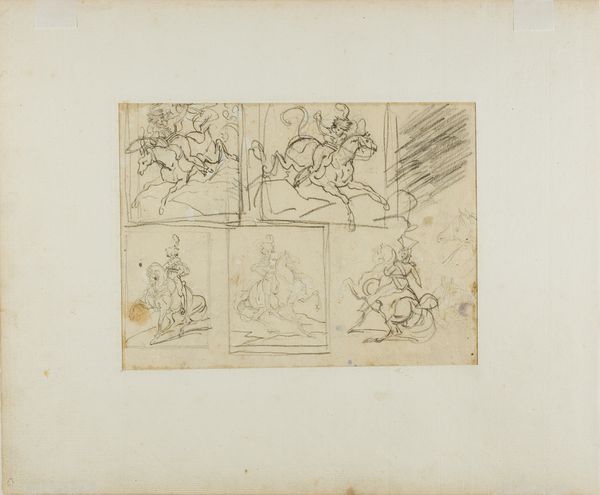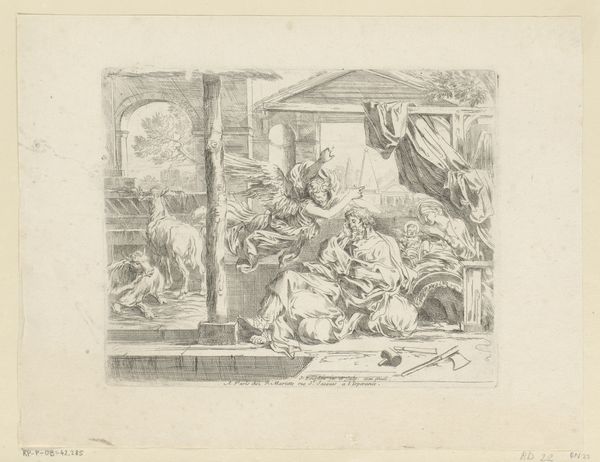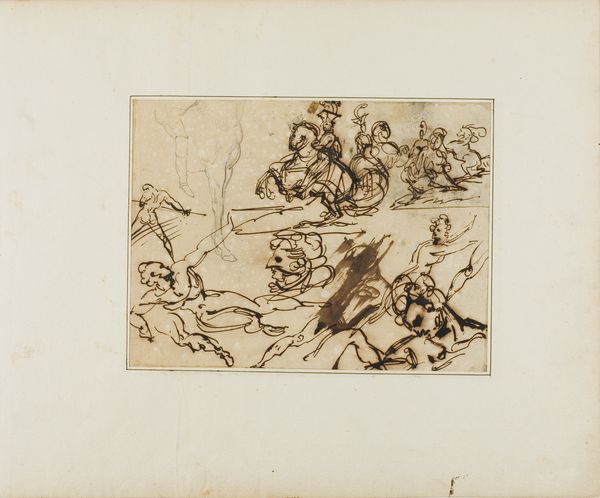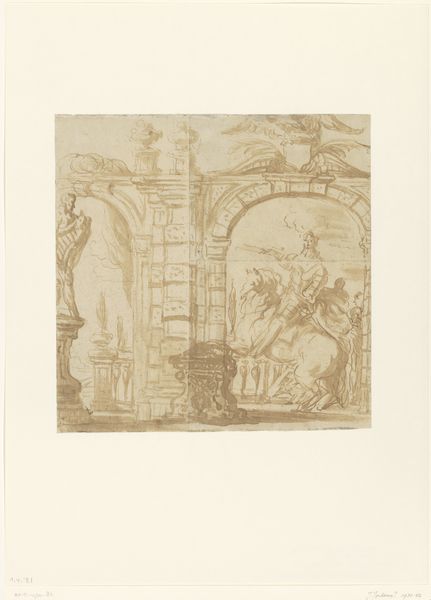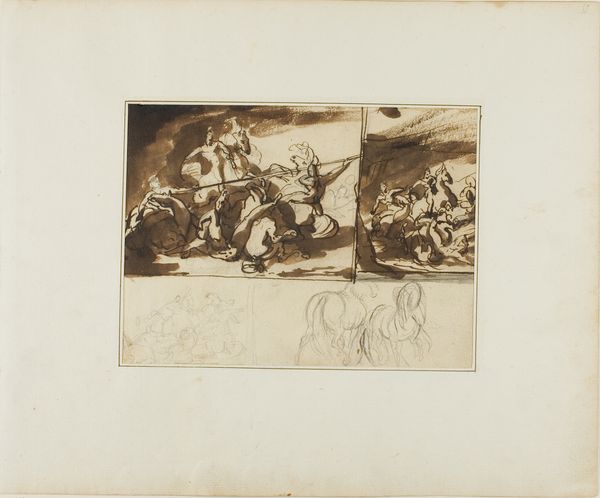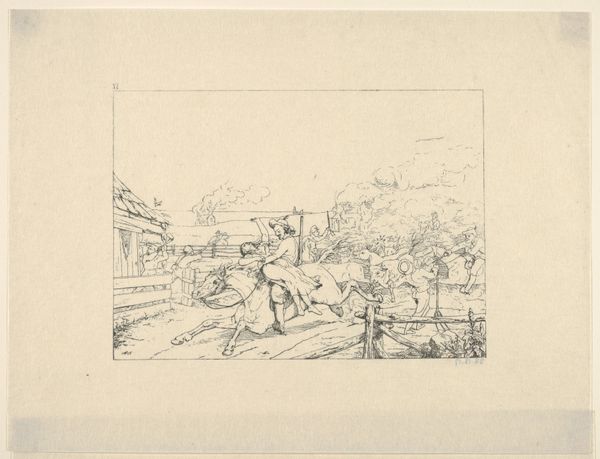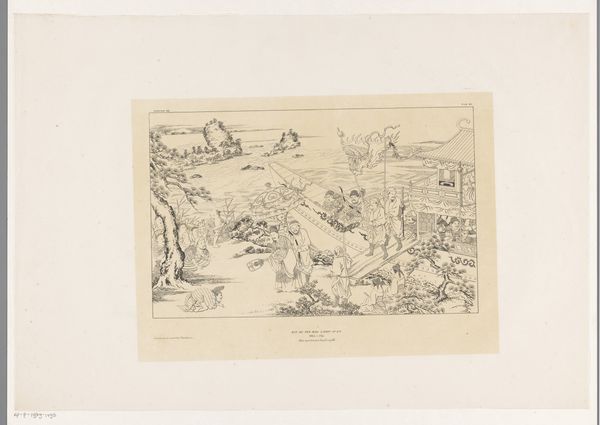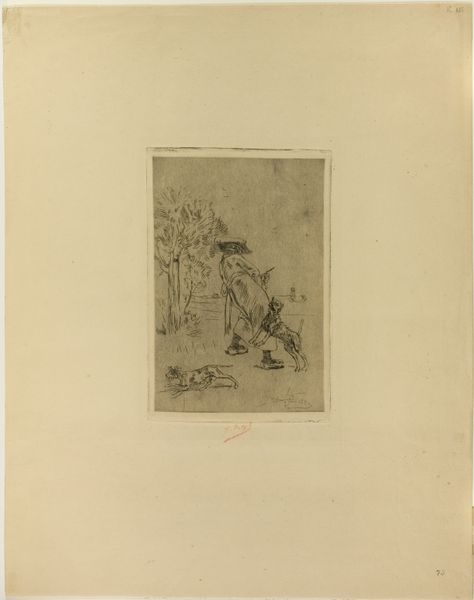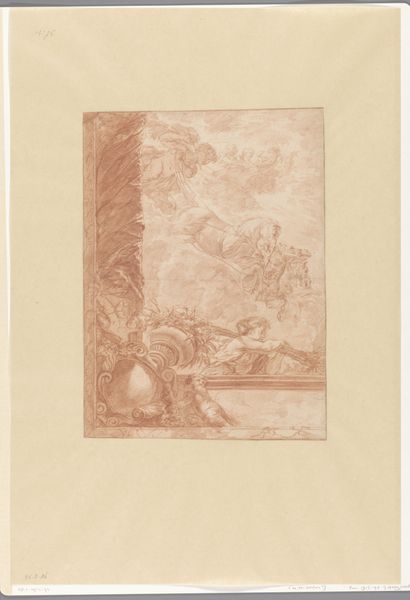
drawing, print, etching, paper
#
drawing
# print
#
etching
#
paper
#
symbolism
Dimensions: 255 × 123 mm (image); 264 × 133 mm (plate); 449 × 323 mm (sheet, folded)
Copyright: Public Domain
Curator: Before us, we have Felicien Rops’ print, "The Siren," the date of which is unspecified, currently residing here at The Art Institute of Chicago. Editor: It has an almost nightmarish quality. That swirling mass in the water is unsettling, like something conjured from a dark dream. Curator: Indeed. Rops, aligned with Symbolism, explored themes of decadence and morality in a rapidly changing societal landscape, a reflection of the anxieties simmering beneath the surface of late 19th-century Europe. The etching and print process itself—the physical labor, the repeated inking and pressing— mirrors this intense focus, creating depth. What is the physical result of this intense making process? This visual turmoil? Editor: The process creates this almost unbearable atmosphere; there’s a dramatic tension being introduced to us between the human figures teetering atop the bridge, contrasting with that swirling, almost monstrous siren below, as the figures on the bridge are precariously positioned! What do you think he is exploring by setting that type of scene? Curator: I see it as a commentary on societal temptations, the destructive allure of the forbidden. Rops critiqued bourgeois morality by exposing its hypocrisies. Editor: So, what's compelling is how Rops implicates the viewer within these dynamics of control and exhibition, placing us as the consumer in this symbolic play. Considering Rops’ work was circulated in various publications and was part of an ever-growing industrialized press at the time, how would this type of scene be viewed by the art-viewing public? Curator: I'd argue its distribution challenged societal norms. Art institutions acted as gatekeepers—selectively embracing or rejecting artists. Rops’ work, through printmaking, circulated challenging the established standards for public consumption and societal perception of morality. Editor: It's this ability to spark public discourse around uncomfortable truths that makes Rops such an important and interesting artist today. He wasn't just making art; he was stirring a cultural pot of ideas with new and challenging visual techniques!
Comments
No comments
Be the first to comment and join the conversation on the ultimate creative platform.
